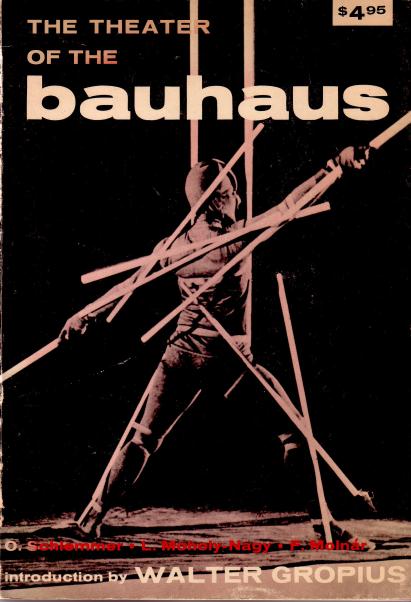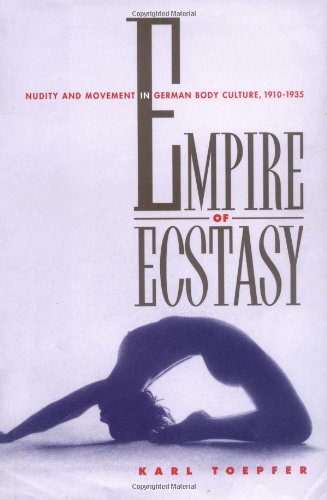Richard Kostelanetz: Dictionary of the Avant-Gardes (1993–)
Filed under book | Tags: · abstract art, aesthetics, art, art criticism, art history, art theory, avant-garde, dance, electroacoustic music, electronic music, experimental film, film, literature, mail art, music, music history, painting, performance art, poetry, radio art, sculpture, theatre, video, video art, visual poetry

“This book elucidates, celebrates, enumerates, and sometimes obliterates achievers and achievements in the avant-garde arts. Although it runs from A to Z, it could as easily have been written from Z to A (or in any other order you might imagine) and may be read from front to back, back to front, or point to point. It is opinionated, as all good dictionaries should be, but it is also inclusive, because there can never be just one avant-garde.
Blake • Rimbaud • Apollinaire • Stein • Cage • Lichtenstein • Tatlin • Keaton • Captain Beefheart • Hologram • Text-Sound Texts • Strobe Light • Grotowski • Soho • Micropress • Electronic Music • Reinhardt • Pound • Performance • Postmodern • Duchamp • Fuller • Oldenberg • Paik • Armory Show • Reich • Cunningham • Copy Culture • Pattern Poetry • Bread and Puppet Theatre” (from the back cover)
With contributions by Richard Carlin, Geof Huth, Gerald Janecek, Katy Matheson, H.R. Brittain, John Robert Colombo, Ulrike Michal Dorda, Charles Doria, and Robert Haller.
Publisher A Capella Books, an imprint of Chicago Review Press, 1993
ISBN 1556522029
246 pages
PDF
2nd edition (2000, 47 MB, added on 2020-3-18)
New additions (2011) selected for Soanyway by Derek Horton (HTML)
Walter Gropius (ed.): The Theater of the Bauhaus (1925–) [DE, EN]
Filed under book | Tags: · acrobatics, art history, avant-garde, bauhaus, circus, constructivism, dance, pantomime, theatre

“The Bauhaus movement was one of this century’s most daring experiments in arts education, and its influence on architecture, design, and the visual arts is well known. Many of its most important ideas are revealed in Bauhaus writings about theatrical performance and performance spaces. Originally published in Germany in 1925 — at the height of the Bauhaus movement’s influence– The Theater of the Bauhaus collects writings from some of the movement’s most important figures and describes a theater stripped of history, moralism, scenery, and, for that matter, narrative itself. The Bauhaus group believed traditional theater to be little more than a vehicle for propaganda, with its “peep show stage” separating spectators from performers. They rejected as well the theater of ridicule and satire practiced by the Dadaists and Expressionists. In place of both traditional drama and the avant-garde that lampooned it, Oskar Schlemmer and his Bauhaus associates created an abstract theater of movement, color, light, form, and sound-language would be added later, once the stage had been purged of its “literary encumbrance.” They believed that humanity’s essential nature–freed from history, tradition, class, and nationality–would find expression in theatrical works that incorporated pantomime, masks, dance, and acrobatics.”
Contents: Walter Gropius: Introduction; Oskar Schlemmer: Man and Art Figure; Laszlo Moholy-Nagy: Theater, Circus, Variety; Farkas Molnar: U-Theater; Oskar Schlemmer: Theater (Bühne); Translator’s Note.
Publisher Albert Langen, Munich, 1925
Volume 4 of Bauhausbücher series
84 pages
via Bibliothèque Kandinsky
English edition
Translated by Arthur S. Wensinger
Publisher Wesleyan University Press, 1961
ISBN 0819560200
110 pages
Die Bühne im Bauhaus (German, 72 MB, via Bibliothèque Kandinsky, added on 2014-8-17, updated on 2022-4-13)
Die Bühne im Bauhaus (German, PDF, JPG, in Heidelberg U Library, added on 2019-7-7)
The Theater of the Bauhaus (English, trans. Arthur S. Wensinger, 1961, 6 MB, updated on 2016-10-15)
See also other titles in Bauhaus Books series.
Comments (6)Karl Toepfer: Empire of Ecstasy: Nudity and Movement in German Body Culture, 1910-1935 (1997)
Filed under book | Tags: · 1910s, 1920s, 1930s, avant-garde, ballet, bauhaus, body, dance, expressionism, germany, photography, theatre, weimar republic

Empire of Ecstasy offers an interpretation of the explosion of German body culture between the two wars—nudism and nude dancing, gymnastics and dance training, dance photography and criticism, and diverse genres of performance from solo dancing to mass movement choirs. Karl Toepfer presents this dynamic subject as a vital and historically unique construction of “modern identity.”
The modern body, radiating freedom and power, appeared to Weimar artists and intelligentsia to be the source of a transgressive energy, as well as the sign and manifestation of powerful, mysterious “inner” conditions. Toepfer shows how this view of the modern body sought to extend the aesthetic experience beyond the boundaries imposed by rationalized life and to transcend these limits in search of ecstasy. With the help of much unpublished or long-forgotten archival material (including many little-known photographs), he investigates the process of constructing an “empire” of appropriative impulses toward ecstasy.
Toepfer presents the work of such well-known figures as Rudolf Laban, Mary Wigman, and Oskar Schlemmer, along with less-known but equally fascinating body culture practitioners. His book is certain to become required reading for historians of dance, body culture, and modernism.
Publisher University of California Press, 1997
ISBN 0520918274, 9780520918276
422 pages
PDF’d HTML, HTML (from the publisher)
See also Mel Gordon, Voluptuous Panic: The Erotic World of Weimar Berlin, 2000–.
Comment (0)
